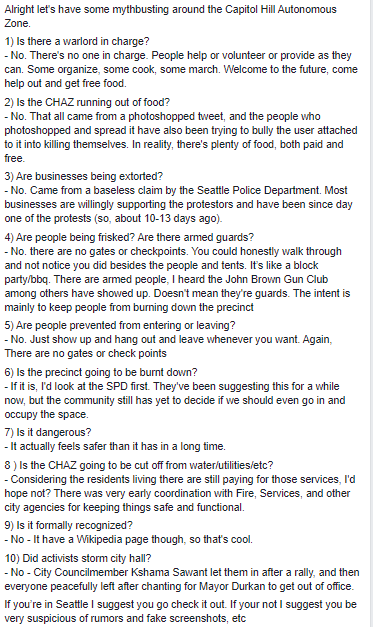SEATTLE — On the streets next to a police station in Seattle’s Capitol Hill neighborhood, protesters and officers spent a week locked in a nightly cycle of standoffs, at times ending with clouds of tear gas.
But facing a growing backlash over its dispersal tactics in the aftermath of
George Floyd’s death in Minneapolis, the Seattle Police Department this week offered a concession: Officers would abandon their building, board up the windows and let the protesters have free rein outside.
In a neighborhood that is the heart of the city’s art and culture — threatened these days as rising tech wealth brings in gentrification — protesters seized the moment. They reversed the barricades to shield the liberated streets and laid claim to several city blocks, now known as the “Capitol Hill Autonomous Zone.”
“This space is now property of the Seattle people,” read a banner on the front entrance of the now-empty police station. The entire area was now a homeland for racial justice — and, depending on the protester one talked to, perhaps something more.
What has emerged is an experiment in life without the police — part street festival, part commune. Hundreds have gathered to hear speeches, poetry and music. On Tuesday night, dozens of people sat in the middle of an intersection to watch “13th,” the
Ava DuVernay film about the criminal justice system’s impact on African-Americans. On Wednesday, children made chalk drawings in the street.



